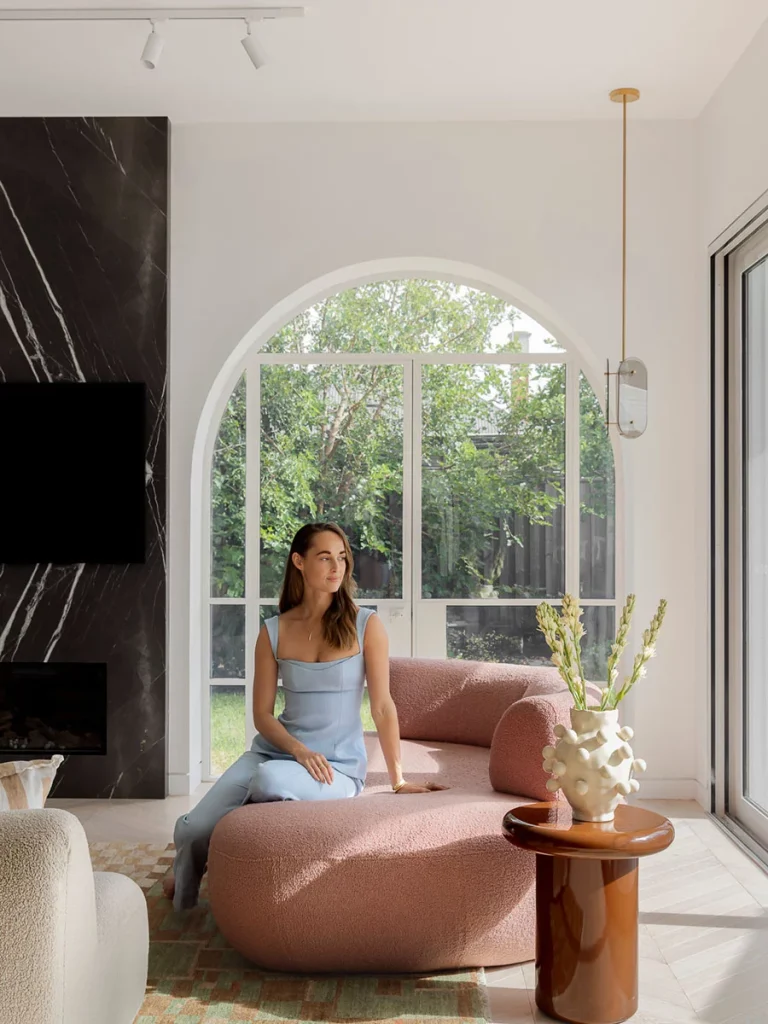Exploring the Role of Intentional Design in Creating Functional Minimalist Spaces

Introduction
In today’s fast-paced world, the concept of functional minimalist spaces emerges as a solution to clutter and chaos. Emphasizing simplicity, intentional design plays a pivotal role in transforming living environments into serene retreats. By prioritizing functionality, these spaces not only reflect personal style but also enhance productivity and well-being.
Understanding Intentional Design
Intentional design is about making deliberate choices that serve a purpose. It involves:
- Purposeful Selection: Choosing items based on their function and aesthetic appeal. For instance, opting for a multipurpose coffee table that serves as both a decorative piece and additional storage can streamline a room’s look while maximizing utility.
- Thoughtful Layout: Arranging spaces to maximize utility and comfort. Open floor plans that promote a seamless flow between rooms encourage both movement and interaction, allowing for a relaxing atmosphere that nurtures connections.
- Quality over Quantity: Investing in fewer, high-quality pieces rather than numerous items. For example, selecting a beautifully crafted wooden chair can make a bold statement in a room, elevating its aesthetic and function simultaneously.
Adopting these principles fosters an environment where everything has a place and every object is meaningful. This approach not only reduces visual clutter but also cultivates a mindset of mindfulness regarding what we choose to bring into our spaces.
The Benefits of Minimalist Spaces
Exploring minimalist spaces unveils benefits that extend beyond aesthetics, including:
- Increased mindfulness: Fewer distractions lead to greater focus. Studies have shown that minimalist environments can significantly reduce stress levels, enhancing mental clarity and encouraging a sense of calm. This focus can be particularly beneficial for those working from home, where distractions are plentiful.
- Enhanced functionality: Efficient use of space allows for seamless movement. Think of small apartments where optimizing every inch is crucial; minimalist design is especially advantageous in urban settings where space is at a premium.
- Lower maintenance: Simple designs require less upkeep. With fewer items to clean and maintain, individuals can spend more time enjoying their spaces rather than managing them. For example, a clutter-free kitchen might only include essential utensils, making cooking and cleaning far more straightforward.
As we delve into the art of intentional design, we invite you to discover how these concepts reshape not just spaces but also lifestyles. Imagine coming home to a tranquil environment that fosters creativity, relaxation, and a renewed sense of purpose. Embracing functional minimalist spaces could very well lead to a more balanced and fulfilling life.

DISCOVER MORE: Click here to learn about the power of saying no
Elements of Intentional Design in Functional Minimalism
Intentional design is the backbone of creating functional minimalist spaces, focusing on elements that not only appeal to the eye but also serve specific needs within a home or workspace. By understanding and applying the key principles of intentional design, individuals can curate environments that promote ease, functionality, and a sense of tranquility. The following elements are fundamental in achieving this goal:
- Color Palette: The choice of colors can drastically influence the ambience of a space. Minimalist design typically employs neutral tones—such as whites, greys, and soft earth tones—that create a clean and airy feel. This approach not only enhances natural light but also encourages a calming atmosphere, essential for a functional minimalist space.
- Natural Materials: Incorporating organic materials like wood, stone, and metal can ground a space, offering warmth and durability. For example, a wooden dining table can serve as a focal point while also encouraging family gatherings, thus serving both aesthetic and functional purposes.
- Lighting Design: Quality lighting is vital in any intentional design. The strategic use of natural and artificial lighting fosters an inviting environment, enhancing mood and productivity. Adjustable light fixtures and ambient lighting options provide flexibility, making spaces feel both bright and cozy.
- Decluttering Strategies: Embracing minimalism means minimizing clutter. This involves not only disposing of unnecessary items but also thoughtfully organizing what remains. Implementing storage solutions such as hidden cabinets or multifunctional furniture can keep spaces tidy, allowing for easier navigation and cleaner aesthetics.
- Personal Touches: While minimalism emphasizes simplicity, incorporating personal elements—such as artwork or photographs—can create a sense of belonging and connection. Choosing a few statement pieces rather than crowded displays conveys personality without overwhelming the space.
The integration of these elements exemplifies how intentional design can seamlessly merge function and style. The beauty of functional minimalist spaces lies in their adaptability to individual needs and lifestyles. Whether it’s a cozy apartment in the heart of New York City or a suburban home in California, the principles of intentional design invite residents to shape their environments into sanctuaries that reflect their values.
As we continue our exploration, it becomes evident that the simplicity of design does not equate to a lack of character. Instead, the thoughtful application of these principles leads to spaces that are both aesthetically pleasing and profoundly functional. This ability to balance the two is what makes intentional design a cornerstone of modern living.
| Category | Description |
|---|---|
| Intentional Aesthetics | Conveys purpose and clarity in design choices, allowing every element to enhance the spatial experience. |
| Functional Arrangement | Promotes a seamless flow within spaces, enhancing usability while maintaining a minimalist approach. |
| Sustainability | Utilizes eco-friendly materials and designs that minimize waste and energy consumption. |
| Mindful Consumption | Encourages thoughtful selection of items, leading to greater satisfaction with fewer possessions. |
The principles of intentional design within functional minimalist spaces resonate beyond mere aesthetics; they invite us to explore deeper connections with our environments. Each design component serves a definitive purpose, minimizing distractions and heightening the overall experience. This intentionality discourages excess, compelling individuals to engage in a conscious awareness of their surroundings. By incorporating sustainable practices, such designs not only enhance human comfort but also respect the broader ecological frameworks. Embracing components that elevate functionality while remaining simply beautiful—this encapsulates the vision behind intentional design in minimalist spaces. Through this lens, we discover that each space can tell a story, creating an inviting atmosphere that merges craftsmanship with thought-provoking environments, encouraging users to immerse themselves more fully in their daily lives.
DISCOVER MORE: Click here to learn about lighting’s influence
Practical Applications of Intentional Design in Everyday Spaces
Understanding the elements of intentional design is just the beginning; applying these concepts effectively transforms spaces into functional havens. Whether it’s scaling down living areas or optimizing workspace layouts, the principles of functional minimalism invite innovative solutions tailored to distinct lifestyles. Below, we dive into practical applications that illustrate how intentional design can elevate the way we interact with our surroundings.
- Flexible Furniture: In many urban environments, where space is a luxury, choosing multifunctional furniture can significantly enhance utility. For instance, a wall-mounted foldable desk can convert any small nook into a productive workspace, while a couch that transforms into a guest bed serves dual functions without occupying excessive space. These adaptable pieces help maintain an uncluttered aesthetic, aligning with the minimalism philosophy of form following function.
- Open Floor Plans: The trend towards open floor plans exemplifies the intentional design philosophy of maximizing space usage. By removing unnecessary walls, homeowners can foster a sense of connectivity and openness, ideal for both families and entertaining. This design choice enhances natural light flow and creates an inviting atmosphere, which is particularly valued in regions like California, where outdoor and indoor living merges seamlessly.
- Smart Technology Integration: Incorporating smart home technology can elevate functionality within minimalist spaces. Automated lighting, temperature control, and security systems not only add convenience but eliminate the need for additional gadgets that could clutter a space. For example, smart thermostats respond to residents’ patterns, ensuring comfort without the bulk of traditional heating and cooling systems, which aligns with the minimalist ideals of efficiency and simplicity.
- Zen Spaces: Creating areas dedicated to mindfulness and relaxation underscores the core of intentional design in functional minimalism. A corner nook with a simple chair, a small shelf for books, and soft lighting can invoke calm, offering a respite from daily chaos. This focus on personal well-being resonates particularly with trends in wellness and self-care, emphasizing the role of spaces that promote mental health as part of the overall design philosophy.
- Biophilic Design: Integrating nature within a minimalist space is becoming increasingly popular, especially in urban settings. The use of indoor plants, natural light, and materials can enhance well-being while maintaining a minimalist aesthetic. For example, a few strategically placed potted plants can improve air quality while adding life and color to a space, bringing the outdoors inside without overwhelming the simplicity of design.
In essence, the practical applications of intentional design extend beyond mere decoration; they embody a lifestyle shift towards simplicity and purpose. By reimagining how we approach living and working environments, individuals can cultivate spaces that serve their needs while remaining visually appealing. This transformation allows for a deeper connection to one’s surroundings, encouraging deeper reflections on what is important and necessary in our fast-paced lives.
The integration of these applications not only transforms spaces but cultivates a culture that values thoughtfulness and mindfulness in design. The journey toward embracing functional minimalist spaces is as much about enhancing personal experience as it is about aesthetic value.
DISCOVER MORE: Click here to learn about cultivating gratitude
Conclusion
As we navigate the complexities of modern living, the role of intentional design in crafting functional minimalist spaces becomes increasingly crucial. This design philosophy goes beyond aesthetics; it represents a conscious effort to create environments that prioritize functionality, well-being, and simplicity. From incorporating flexible furniture to embracing biophilic elements, each application speaks to a broader commitment to a lifestyle that values mindfulness and efficiency.
The evolution towards open floor plans and smart technology integration highlights a shift in how we perceive traditional living and working environments. By eliminating clutter and focusing on essential features, individuals can cultivate spaces that not only serve their practical needs but also enhance their quality of life. The integration of Zen spaces seamlessly aligns with contemporary wellness trends, acknowledging that our surroundings significantly impact mental health and emotional well-being.
Ultimately, intentional design fosters a deeper connection between individuals and their environments, prompting reflection on what truly matters in our lives. As the minimalist movement continues to grow, it encourages a culture that emphasizes thoughtful choices and a home that resonates with personal values. By embracing this approach, we not only transform our living spaces but also contribute to a life of purpose and clarity, marking a significant step towards a more balanced future.


